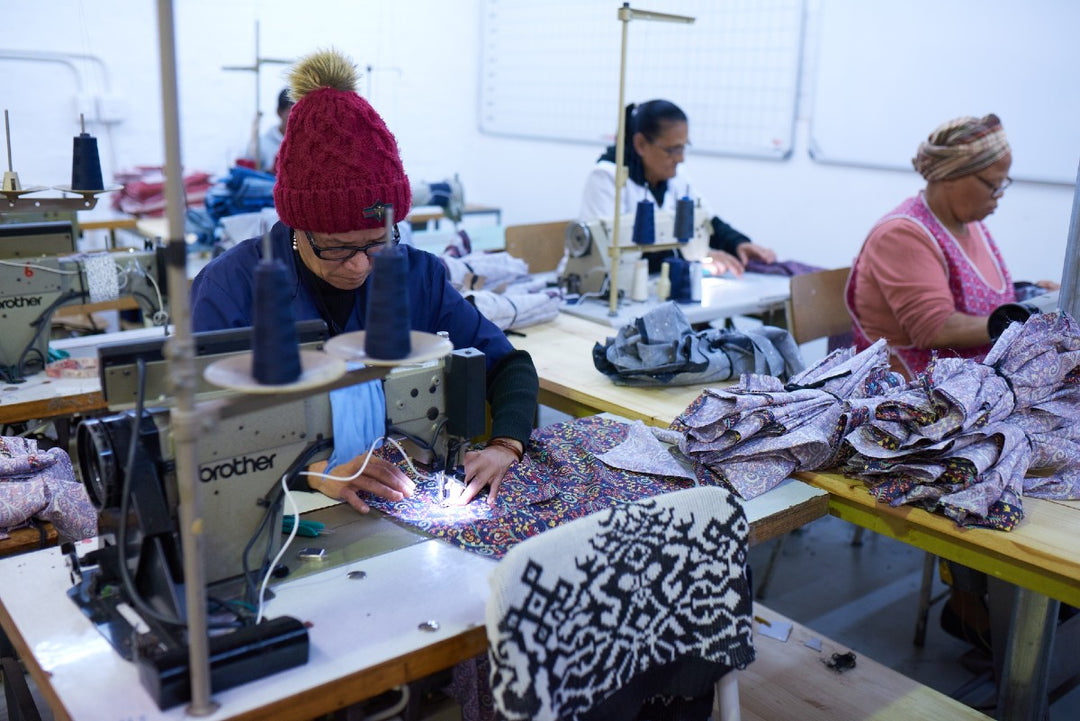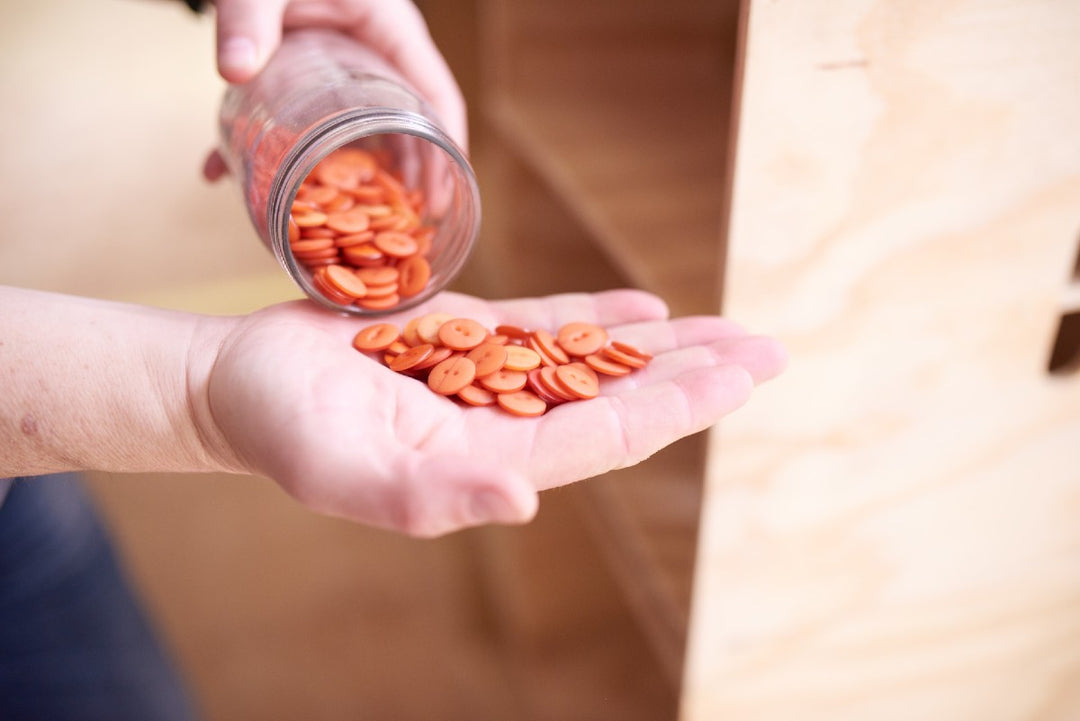1. Introduction
When it comes to nightwear, choosing the best fabric for pajamas can dramatically affect how you sleep. From texture and breathability to sustainability and style, fabric choice is a matter of comfort and values.
Tencel vs silk is a common comparison among those seeking a luxury feel with practical benefits. Add satin pajamas into the mix, and you have three distinct approaches to modern loungewear. From European sleepwear fabrics rooted in tradition to innovative eco-conscious fibres, each fabric brings something unique to the table.
This guide breaks down the differences to help you find the right fit for your nightwear needs.
2. What is Tencel?
Tencel™, produced by Lenzing AG, includes fibres like Lyocell and Modal made from sustainably sourced wood pulp (see What is Tencel? for a full explanation). The production uses a closed-loop system that recovers over 99% of solvents, making it a leader in sustainable textile innovation [1].
It’s soft, breathable, and moisture-wicking — ideal for eco-conscious consumers and perfect for modern pajamas. Compared to silk, Tencel is often more practical while offering comparable softness, making it a popular option in European sleepwear fabrics [2].

3. What is Silk?
Silk is a natural protein fibre made by silkworms, valued for over 5,000 years [3]. It has an unmatched sheen, lightness, and ability to regulate temperature, which is why it remains the gold standard in luxury nightwear.
Silk pajamas, including mens silk pajamas and womens silk pajamas, offer an indulgent experience. But their delicate nature and care requirements make them better suited for occasional wear rather than everyday use [4].

4. What is Satin?
Satin refers to a weaving technique, not a fibre. While traditional satin was made from silk, most modern satin pajamas are made from polyester or nylon. These blends are glossy and smooth, offering visual appeal at lower costs [5][6].
Polyester satin offers shine and drama. It works if you want a glamorous finish and a low cost. However, it does not breathe well and can trap heat. It also lacks the natural comfort and sustainability found in Tencel or pure silk.

5. Fabric Structure and Feel
- Tencel: Smooth and breathable, with a soft touch that suits sensitive skin [1].
- Silk: Naturally soft and fluid, offering elegance and lightness [3].
- Satin: Surface-dependent. Polyester satin can feel slippery and clingy, while silk satin offers a premium feel [5].
Each of these options is chosen not just for how they feel, but for how they drape and perform under different conditions.
6. Appearance and Finish
- Tencel: Matte or semi-sheen, modern and understated [2].
- Silk: Natural lustre with deep glow, thanks to its triangular fibre structure [4].
- Satin: High-gloss surface. Silk satin appears more refined; polyester satin may look synthetic [6].
If you want visual richness, silk pajamas or silk satin styles lead the way. Tencel, however, offers a subtle aesthetic with a sustainable edge.
7. Breathability and Moisture Management
- Tencel: Highly breathable and wicks moisture better than cotton, making it great for warm climates [1][2].
- Silk: A natural thermoregulator, great for all seasons [4].
- Satin: Polyester satin traps heat and sweat. Silk satin performs better but costs more [7].
If breathability is your top priority, Tencel and silk are superior choices, especially in the context of European sleepwear fabrics known for comfort and climate adaptability.
8. Durability and Care
- Tencel: Machine-washable, wrinkle-resistant, and long-lasting [1].
- Silk: Requires delicate care and is prone to damage over time [3].
- Satin: Polyester satin is easy to maintain; silk satin needs delicate handling [5].
For everyday pajamas, Tencel offers the best combination of practicality and luxury.
9. Skin Sensitivity and Comfort
- Tencel: Hypoallergenic, anti-bacterial, and ideal for sensitive skin [2].
- Silk: Also hypoallergenic, and perfect for those prone to irritation [4].
- Satin: Polyester satin may cause overheating and irritation. Silk satin is gentle and skin-friendly [7].
Both Tencel and silk are solid choices for anyone with skin conditions or allergies.
10. Sustainability and Environmental Impact
- Tencel: One of the most sustainable fabrics available, with closed-loop processing and biodegradability [1].
- Silk: Natural and biodegradable but resource-intensive and ethically controversial [3].
- Satin: Polyester satin is petroleum-based and non-biodegradable. Silk satin is more sustainable but expensive [6].
When sustainability is key, Tencel comes out ahead in the Tencel vs silk conversation.
11. Price Comparison
- Silk pajamas: £150–£300+/€170-€350+. True luxury with a price to match [3].
- Tencel pajamas: £60–£120/€70-€140. A mid-range option offering eco-luxury [1].
- Satin pajamas: £20–£60/€20-€70. Budget-friendly, with trade-offs in breathability and comfort [5][6].
If you're shopping for the best fabric for pajamas on a budget, satin fits. If you want value without compromise, Tencel hits the sweet spot.
12. Comparison Table: Tencel vs Satin vs Silk
| Feature | Tencel™ | Silk | Satin (Polyester) |
|---|---|---|---|
| Feel | Smooth, breathable | Ultra-soft, luxurious | Glossy, slippery |
| Appearance | Matte to semi-sheen | Natural lustre | High-gloss shine |
| Breathability | Excellent | Excellent | Poor |
| Moisture Control | Excellent | Moderate | Very low |
| Care | Easy | Delicate | Easy (polyester) |
| Durability | High | Moderate to low | Varies |
| Skin-friendliness | Hypoallergenic | Hypoallergenic | Can irritate |
| Sustainability | High | Moderate | Low |
| Price | £60–£120 €70-€140 |
£150–£300+ |
£20–£60 |
| Best For | Sustainable everyday luxury | Special occasions, gifting | Affordable glamour |
13. Which Fabric Should You Choose?
- Silk: Ideal for those who want ultimate luxury. Choose womens silk pajamas or mens silk pajamas for a refined feel and unmatched softness.
- Tencel: Best for comfort, easy care, and sustainability. It offers a feel comparable to silk at a more accessible price, making it a top choice in European sleepwear fabrics.
- Satin: Best for those who want the glossy look without spending much. Ideal for entry-level loungewear or special occasions.
14. Conclusion
Whether you're choosing based on eco-values, comfort, or aesthetic, understanding the differences in Tencel vs silk and satin will guide you to the right choice. Tencel pajamas strike a balance between practical luxury and sustainability, while silk pajamas continue to represent elegance and tradition. For affordability and glamour, satin pajamas deliver the look, though not always the feel.
In the end, the best fabric for pajamas is the one that fits your values, skin, lifestyle — and sleep.
15. References
- [1] Lenzing AG – TENCEL™: The Sustainable Fibre of the Future. Lenzing.com
- [2] WellFabric – Tencel vs Silk Fabric Differences. WellFabric
- [3] International Sericultural Commission – History of Silk. Inserco.org
- [4] Ethical Bedding – Satin vs Silk: Pros and Cons. Ethical Bedding
- [5] Whaleys Bradford – What is the Difference Between Silk and Satin? Whaleys-Bradford
- [6] Good On You – Satin: What You Need to Know. GoodOnYou.eco
- [7] Sino-Silk – Is Satin Breathable? Sino-Silk.com






